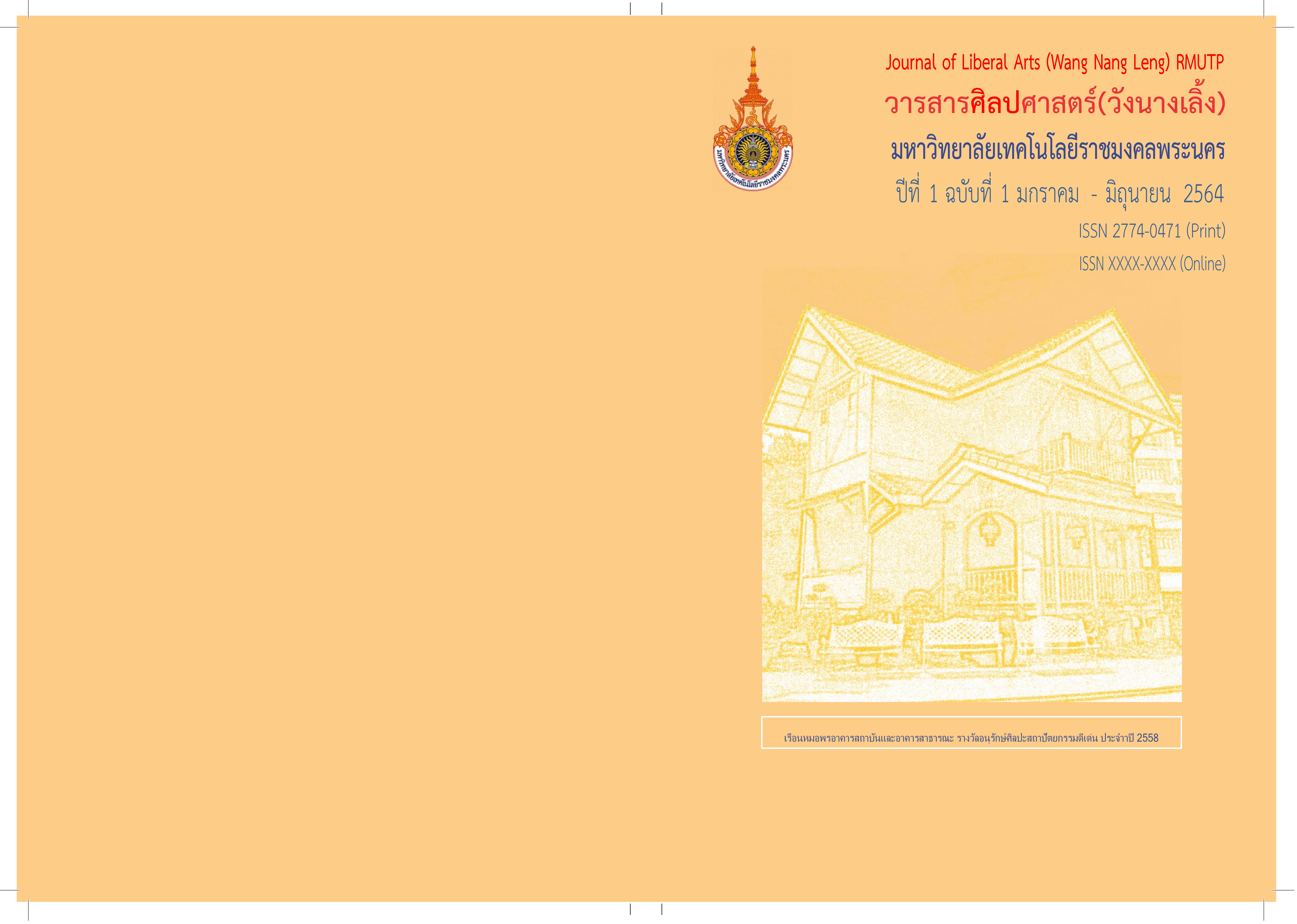Symbols, beliefs, and the identity of Thai-Laos woven fabrics
Abstract
Weaving is a culture of women who have to weave cloth to be used as a garment or as an object from birth until death, even showing the role that made it accepted in the matter of having a family a canvas showing social standing Weaving is the process of creating fabrics that are the same in ASEAN but that are unique to each locality. From education Symbols, beliefs, and the identity of Thai-Laos woven fabrics it was found that in the weaving process, starting from the cultivation of mulberry silk Techniques for fermenting fabrics with natural materials such as mud, rice water, and natural fiber dyes give the fabric different colors, weaving to
create patterns is often based on stories. beliefs of each area Some made designs related to religious matters, beliefs about the serpent. Stories about culture, traditions, way of life, important places with the methods of jok, kid, and muddled, and when the time changes, the symbols that appear in the woven fabric will become the value of the work that is preserved to create value in that fabric. And it appears in a typical pattern that has been applied to change. that need to be adjusted due to the changing trend of consumption because weaving is mainly woven according to the needs of consumers. But in the end, wearing woven fabrics still represents a mixed culture so that society can feel and tell the story of the roots of culture and way of life even though the style of clothing has changed to keep up with the times. But the current of woven fabrics will still be in tandem with the culture that, even though it has changed over time, the identity still speaks to the clarity, it still needs to convey the identity of the future.
References
ชนิดา ตั้งถาวรสิริกุล. (2541). สื่อสัญลักษณ์ผ้าลาวเวียงจันทร์. สำนักงานกองทุนสนับสนุนการวิจัย. กรุงเทพฯ.
ชลธิรา สัตยาวัฒนา. (2537). บทความ: สายใยความสัมพันธ์ไทลาวบนผืนผ้า. ในมรดกและแหล่งท่องเที่ยวลาว. องค์การท่องเที่ยวแห่งประเทศไทย สปป.
ลาวร่วมกับสำนักพิมพ์เพื่อนชีวิตจัดพิมพ์ เป็นภาษาไทย-ลาว.
ชิน อยู่ดี. (2516). วัฒนธรรมบ้านเชียงในสมัยก่อนประวัติศาสตร์. กรุงเทพฯ:กรมศิลปากร.
ดอกไม้ ปานพาน. (2555). มโนราห์กินรี [ออนไลน์], ค้นเมื่อ 25 มิถุนายน 2564, จาก: https://www.gotoknow.org/posts/233832.
พิสิฐ เจริญวงศ์. (2516). บ้านเชียง. กรุงเทพฯ: โรงพิมพ์พิฆเนศ. หาคำ จำปาแก้วมณี และคณะ. 2539. ประวัติศาสตร์ลาว. สุวิทย์ ธีรศาศวัต แปล.
ขอนแก่น: คณะมนุษยศาสตร์และสังคมศาสตร์ มหาวิทยาลัยขอนแก่น.
ุ6. วิชัย อภัยสุวรรณ. (2517). บทความ: สัตว์ในจินตนาการของมนุษย์. วารสารชาวกรุง, ปีที่ 23 เล่ม 8.
วิบูลย์ ลี้สุวรรณ. (2530). ผ้าไทย: พัฒนาการทางอุตสาหกรรมและสังคม. กรุงเทพฯ: บริษัทเงินทุนอุตสาหกรรมแห่งประเทศไทย.
ศักดิ์ศรี แย้มนัดดา. (2522). บทความ: นาค. วารสารความรู้คือประทีป ฉบับที่ 4.
ศรีศักร วัลลิโภดม. (2533). แอ่งอารยธรรมอีสาน. ศิลปวัฒนธรรมฉบับพิเศษ. กรุงเทพฯ: สำนักพิมพ์มติชน.
สยามคเณศ. (2564). “พญาครุฑ” เทพพาหนะแห่งพระวิษณุ [ออนไลน์], ค้นเมื่อ 25 มิถุนายน 2564, จาก: http://www.siamganesh.com/garuda.html
สุมิตร ปิติพัฒน์ และคณะ. (2553). เกิด แก่ เจ็บ ตาย: วิถีไทในผืนผ้า. กรุงเทพมหานคร: สถาบันไทยคดีศึกษา มหาวิทยาลัยธรรมศาสตร์.
สุเมธ ชุมสาย ณ อยุธยา. (2529). น้ำ: บ่อเกิดแห่งวัฒนธรรมไทย. กรุงเทพฯ: สำนักพิมพ์ไทยวัฒนาพานิช.
Patricia Cheesman Naenna. (1990). Costume and Culture, Vanishing Textiles of Some of the Tai Groups in Laos P.D.R.
Thaigoodview. (2009). เรือคชสีห์ [ออนไลน์], ค้นเมื่อ 25 มิถุนายน 2564, จาก: http://www.thaigoodview.com/node/37932
Downloads
Published
How to Cite
Issue
Section
License
วารสารศิลปศาสตร์ (วังนางเลิ้ง) มหาวิทยาลัยเทคโนโลยีราชมงคลพระนคร อยู่ภายใต้การอนุญาตของคณะศิลปศาสตร์ มหาวิทยาลัยเทคโนโลยีราชมงคลพระนคร เว้นแต่จะได้รับอนุญาติเป็นอย่างอื่น





